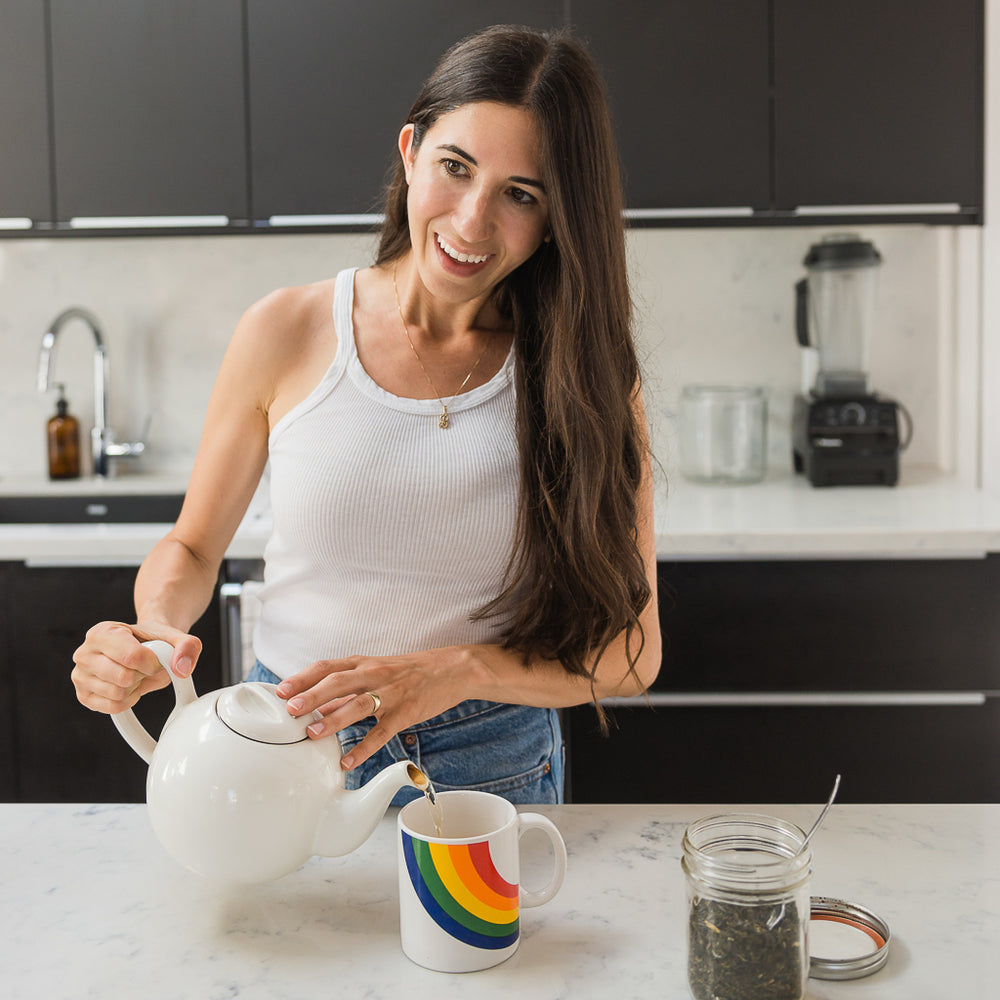The seasons change, the air turns crisp and it’s a great time to curl up with a steaming cup of plastic....wait, WHAT!?
Tea Drinkers—did you know that tea bags often are made from plastic? Food-grade plastic like polypropylene terephthalate (PET) and nylon are often used to seal bags shut and help keep the bags’ shape in hot water. While both types of plastic have very high melting points and are considered “food safe”, studies have shown that they can leach compounds that can cause reproductive health issues due to their ability to mimic hormones.
Plastic isn’t just bad for our health, it’s bad for our environment. Due to its plastic content, many conventional tea bags cannot break down in compost, much to the surprise and dismay of many home composters. Even if the bag doesn’t contain plastic and is completely compostable, the individual sleeves used to package each bag often contain plastic in order to preserve the freshness of the tea leaves.
There are three main types of tea bags styles:
"Pillow Style" teabags have a crimped edge in a square or round shape and are often made from a blend of paper and plastic woven fibers. The bag is sealed shut using heat and the plastic binds it closed. These bags often contain about 20-30% plastic.
“Silken” sachets are almost always made of plastic, not silk as the name would imply. The plastic used in these bags is typically food-grade nylon, but some are made from a plant-based plastic derived from corn. It is important to understand that while the plant-based bags are “biodegradable” they are not compostable at home and must be sent to a commercial facility to fully break down.
String and tag bags are closed by folding the bag and stitching or stapling it shut. While these bags don’t require plastic to seal shut, they may still contain polypropylene fibers to keep the shape of the bag in hot water. Also, even if the bag itself is compostable, the sleeves used to individually package each bag usually contain a plastic or plastic foil layer to “maintain freshness” and cannot be composted or recycled.
I did an audit of the top tea brands in the US to see which brands use plastic and which do not.
|
Manufacturer |
Bag Style |
Bag Compostable? |
Sleeves are Recyclable/ Compostable? |
| Argo Tea | Silken Sachet | No | Not recyclable; sleeves contain plastic |
| Bigelow | String & Tag | Yes | Not recyclable; sleeves contain plastic |
|
Pillow Style |
Yes |
No individual sleeves, but the box itself is wrapped in plastic |
|
|
Silken Sachet |
No |
Not recyclable; sleeves contain plastic |
|
|
String & Tag |
Yes, minus the staple |
No individual sleeves, but the box itself is wrapped in plastic |
|
|
Silken Sachet |
Yes, but only at commercial facilities |
Not recyclable; sleeves contain plastic |
|
|
String & Tag |
Yes |
Not recyclable; sleeves contain plastic |
|
|
String & Tag |
No |
Not recyclable; sleeves contain plastic |
|
|
String & Tag |
Yes |
Not recyclable; sleeves contain plastic |
|
|
String & Tag |
Yes |
Not recyclable; sleeves contain plastic |
|
|
Pillow Style |
Yes |
No individual sleeves, comes in a recyclable metal tin. |
|
|
String & Tag |
Yes |
Not recyclable; sleeves contain plastic |
I was happy to discover that many tea brands have compostable bags, but they are often packaged in sleeves made of plastic or lined with a plastic film or foil making them non-compostable and non-recyclable. Many tea brands argue that these individual sleeves are essential to maintain the freshness of the tea leaves. Other brands might skip the individual sleeves but instead wrap the entire box in plastic. The one exception I found was Republic of Tea—the bags are compostable, are not individually wrapped and come in a recyclable metal tin.

Options for Plastic-Free Tea
Another great option is to buy loose leaf tea at a supermarket or co-op. Also, check in with your local tea shops to see if they will sell you tea in your own jar or bag—I’ve had great luck with tea shops, especially in Chinatown.
Loose leaf tea is not only the best option for the environment, it is a higher quality tea compared to bagged varieties. Loose leaf tea is generally made from whole unbroken leaves, versus the dust and fannings used in bagged varieties. Loose leaf tea absorbs water and expands as it infuses, extracting a wide range of flavors and aromas from the leaves. Freshness is often an issue with bagged tea, which is why many manufacturers individually package each bag in a plastic sleeve.
My favorite way to drink loose leaf tea is in a steeping pot. The leaves have room to unfurl and expand and I get a rich and satisfying flavor. When I'm traveling or on the go, I bring a small glass jar of leaves and a stainless steel infuser.
I'd love to hear from you, what is your favorite way to enjoy plastic-free tea?

